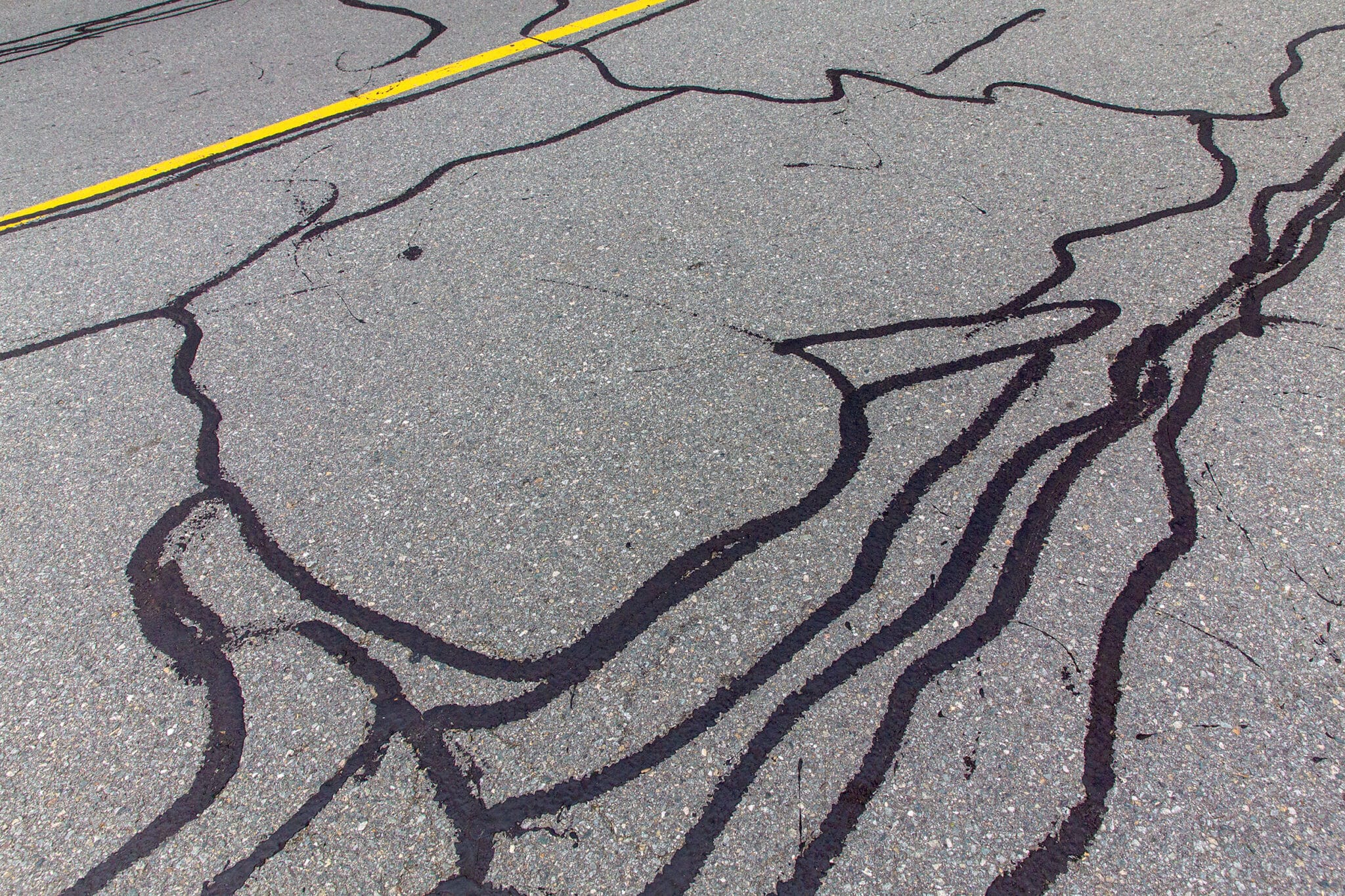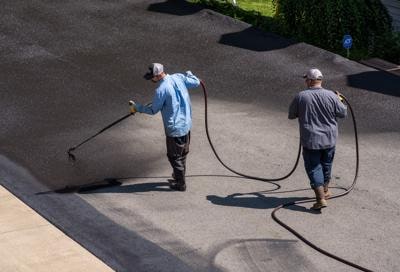Warm Mix Asphalt: A Sustainable Option for Sidewalk
Warm Mix Asphalt (HMA) has emerged as a leading lasting option for pavement options, using a myriad of ecological benefits and innovative modern technologies. As the need for environment-friendly building and construction methods expands, exploring the subtleties of HMA's sustainability can give useful insights right into the future of pavement solutions.
Environmental Advantages of Hot Mix Asphalt

In Addition, Hot Mix Asphalt aids to mitigate urban heat island results. Its dark shade absorbs sunlight, minimizing the quantity of heat reflected back into the environment compared to lighter-colored sidewalks. This can decrease ambient temperature levels in metropolitan locations, lowering the need for air conditioning and eventually decreasing energy intake.
On top of that, Warm Mix Asphalt adds to improved stormwater monitoring. Its permeable nature allows water to infiltrate the sidewalk and charge groundwater supplies, lowering overflow and the danger of flooding. These ecological benefits make Warm Mix Asphalt a sustainable choice for paving roadways and highways.
Energy Efficiency in HMA Production
Is energy performance a critical element in the manufacturing of Warm Mix Asphalt (HMA)? Definitely. Energy plays a substantial duty in the production of HMA, impacting both cost and environmental sustainability. One crucial aspect of power effectiveness in HMA production is the usage of warm mix asphalt (WMA) innovations (commercial parking lot paving). WMA enables the blending and positioning of asphalt at reduced temperature levels compared to standard warm mix asphalt, leading to reduced energy intake during production. This procedure not just reduces fuel usage but additionally reduces greenhouse gas discharges, making it an extra eco-friendly alternative.
Furthermore, developments in plant technologies have resulted in even more energy-efficient HMA production procedures. Modern plants are created with functions like recycled asphalt sidewalk (RAP) handling capabilities, efficient heater systems, and enhanced insulation, all adding to energy savings. By maximizing power usage in HMA production, the market can minimize its carbon footprint while preserving high-grade sidewalk materials. Energy effectiveness is, for that reason, a vital factor to consider in making sure the sustainability of Warm Mix Asphalt production.
Recyclability of Warm Mix Asphalt
The recyclability of Hot Mix Asphalt (HMA) is a crucial aspect of its sustainability and long-term environmental influence. HMA is just one of the most recycled materials in the United States, with over 100 million bunches of redeemed asphalt pavement (RAP) being recycled each year in brand-new sidewalk building and construction. Reusing HMA supplies numerous environmental benefits, such as decreasing the need for virgin products, decreasing energy usage during manufacturing, and lowering the quantity of waste sent out to land fills.
The process of reusing HMA includes crushing the existing sidewalk, crushing it into smaller sized pieces, and blending it with new aggregate and asphalt binder to produce a recycled mix. This recycled mix can frequently carry out as well as and even better than traditional HMA, while needing fewer resources and creating reduced greenhouse gas exhausts. By integrating RAP right into new sidewalk tasks, roadway firms can save natural deposits, minimize costs, and decrease the environmental impact of road construction and maintenance tasks. Overall, the recyclability of HMA plays a considerable duty in advertising lasting practices within the pavement market.

Long-Term Efficiency of HMA
Asphalt pavements demonstrate longevity and durability over an extended period, reflecting the lasting efficiency of Hot Mix Asphalt (HMA) The longevity of HMA can be credited to its capacity to hold up against rush hour lots, rough weather condition conditions, and the effects of aging. Research studies have actually shown that properly designed and appropriately built HMA sidewalks can last for two decades or more with regular maintenance. The trick to making the most of the lasting performance of HMA exists in utilizing high-quality products, following finest techniques in building and construction, and executing effective upkeep strategies. Appropriate drain, regular evaluations, and prompt repair services are important for maintaining the structural honesty of HMA pavements over time. In addition, advancements in HMA technology, such as the use of polymer-modified binders and cozy mix asphalt, read review have actually additionally improved the longevity and durability of HMA pavements. By focusing on high quality building and construction and upkeep practices, HMA remains to confirm itself as a sustainable and cost-efficient remedy for lasting sidewalk infrastructure.

HMA: Durability and Sustainability
Showing both sturdiness and sustainability, Warm Mix Asphalt (HMA) has become a cornerstone in the construction of lasting pavement frameworks - regrading. HMA's durability comes from its capacity to stand up to heavy lots, severe weather, and high website traffic quantities, making it a reputable choice for roads, freeways, and airport paths. The composition of HMA, which normally includes aggregates, binder, and filler, plays an essential function in boosting its long life and resistance to put on and tear
Additionally, HMA's sustainability depends on its recyclability and energy-efficient production process. The capability to recycle recovered asphalt sidewalk (RAP) in new HMA blends minimizes the need for virgin materials and lessens the ecological impact of sidewalk construction and maintenance. In addition, the energy efficiency of creating HMA hinges on its reduced blending temperatures contrasted to other pavement products, causing lowered energy consumption and greenhouse great post to read gas discharges.
Final Thought
In final thought, warm mix asphalt (HMA) uses a lasting option for sidewalk with its ecologically friendly features. HMA's recyclability, energy efficiency in production, and long-term sturdiness make it an eco-friendly selection for road building. By saving all-natural sources, minimizing waste, and reducing greenhouse gas exhausts, HMA plays a vital function in advertising sustainability in facilities development. Its ability to mitigate urban warm island results better highlights its importance in creating environmentally mindful and resilient sidewalk systems.
HMA is one of the most recycled materials in the United States, with over 100 million tons of reclaimed asphalt pavement (RAP) being recycled yearly in new sidewalk construction.The process of reusing HMA entails grating the existing sidewalk, squashing it into smaller items, and mixing it with new accumulation and asphalt binder to create a recycled mix.Asphalt pavements show toughness and resilience over an extended duration, mirroring the lasting efficiency of Hot Mix Asphalt (HMA) Furthermore, developments in HMA modern technology, such as the usage of polymer-modified binders and cozy mix asphalt, have actually better enhanced the sturdiness more tips here and long life of HMA pavements. The capacity to reuse reclaimed asphalt sidewalk (RAP) in new HMA mixes reduces the demand for virgin materials and decreases the environmental effect of pavement construction and maintenance.
Comments on “Unleash the Possible: Regrading and Asphalt Sealing for Business Spaces”